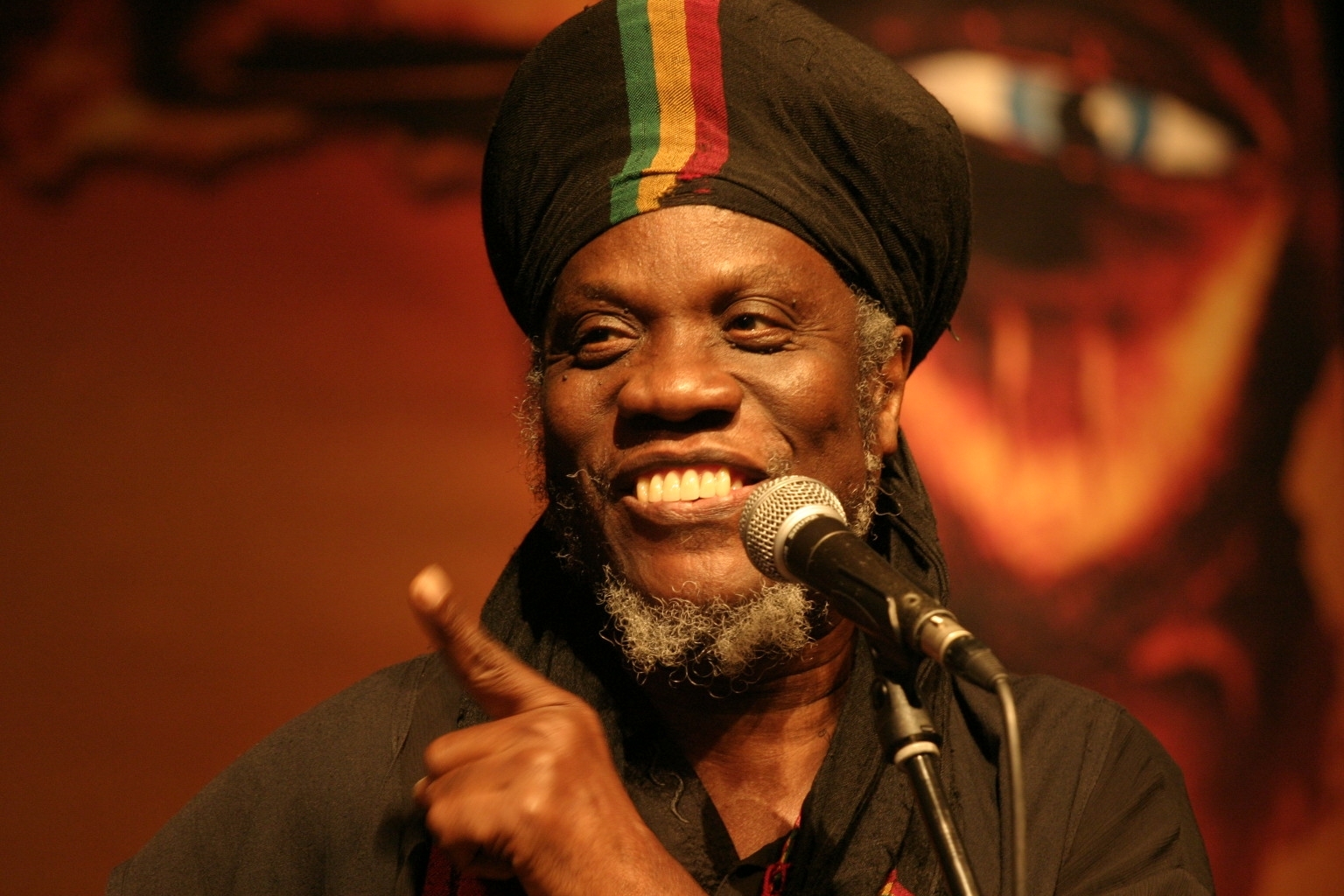“People have been covering their head since the days of the bible.”
If you are familiar with images of the men of the Tuareg (“Blue People”) or other Northern African peoples, I am sure you will find similarities between their styles of head wrapping and the style worn by this week’s feature, Mutabaruka!
Mutabaruka, a Jamaican poet who writes primarily in the unofficial language of the people, turned to Rastafarianism in the late 1970s during a rise of black awareness in Jamaica. Persons often assume he wears turbans due to religious reasons; however, his turbans are completely utilitarian. When I asked him why he wrapped his hair, his answer was a simple truth, stating “well, mi nuh like de looseness of de hair”. Translated: I don’t like the looseness of the hair. So his turban’s simple purpose is to tie the hair  upward.
upward.
When I asked him about his inspiration for his style, said he learned from the men of Niger, Mali, and Morocco. He has travelled to the southern parts of Senegal and was further inspired by African nomads who wrap as a means of protection from the wind and the coarseness of the sand. Mutabaruka, like the nomads of the Sahara, wraps this head, neck, and sometimes his face depending on his geographic location.
 I was surprised to learn that Muta began wrapping his hair within the past 12-15 years. Possibly like many of you, I had grown so accustomed to associating Mutabaruka’s turbans with is persona, that I thought it was something he had been doing since the 70s. Now we know that is not the case.
I was surprised to learn that Muta began wrapping his hair within the past 12-15 years. Possibly like many of you, I had grown so accustomed to associating Mutabaruka’s turbans with is persona, that I thought it was something he had been doing since the 70s. Now we know that is not the case.  Along with his distinct turbans, Muta typically wears garments which represent his Rastafarianism and the influences of the many African people he has come in contact with.
Along with his distinct turbans, Muta typically wears garments which represent his Rastafarianism and the influences of the many African people he has come in contact with.
I am always interested in learning about the challenges faced by WrapStars and their means of overcoming them. So, of course I was delighted at the opportunity to learn from Mutabaruka himself. Admittedly, I was very surprised to learn that Muta’s challenges have been few. He has no problems passing through security at the airport as they do not ask him to remove his turbans. Muta says “bway, dem usually tink seh mi a waa high priest or some  voodoo doctor or a witch doctor suh dem nuh trouble me”. Translations: “They think I am a high priest or a voodoo doctor or a witch doctor so they don’t bother me”. He laughs as he says that. Muta explains that he has had to remove his turbans based on the embassy entry requirements of some of the countries he travels to. But that is only for visa and security requirements. Furthermore, many government offices accept and understand that some turbans are related to the wearers religion and will not ask to remove them.
voodoo doctor or a witch doctor suh dem nuh trouble me”. Translations: “They think I am a high priest or a voodoo doctor or a witch doctor so they don’t bother me”. He laughs as he says that. Muta explains that he has had to remove his turbans based on the embassy entry requirements of some of the countries he travels to. But that is only for visa and security requirements. Furthermore, many government offices accept and understand that some turbans are related to the wearers religion and will not ask to remove them.
Mutabaruka, who still lives in Jamaica, says Locks (dreadlocks) still carry a stigma in Jamaica and the youth wearing locks still face some scrutiny in schools. However, many of them have found that in most cases, wrapping their hair is more acceptable. At this point, I would love to write about the origins of the term “dreadlocks” but I invite you to do that research on your own. For amazing images of men who wear turbans like Mutabaruka’s search for images of the Taureg, the Berbers of Morocco, and the Fula Macina of Senegal just to name a few.
stigma in Jamaica and the youth wearing locks still face some scrutiny in schools. However, many of them have found that in most cases, wrapping their hair is more acceptable. At this point, I would love to write about the origins of the term “dreadlocks” but I invite you to do that research on your own. For amazing images of men who wear turbans like Mutabaruka’s search for images of the Taureg, the Berbers of Morocco, and the Fula Macina of Senegal just to name a few.
If you happen to see our WrapStar Mutabaruka in passing, please thank him for sharing his insights and knowledge with us!
On Wednesday nights, you can listen to Mutabaruka’s weekly talk show, “The Cutting Edge” on IrieFM live in Jamaica or online via iriefm.com.
I welcome your comments!
Check out and LIKE our Montserrat Facebook page here




